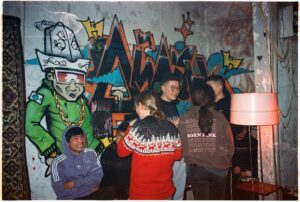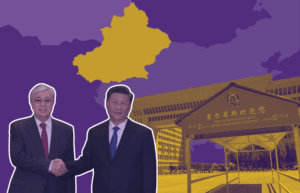Central Asia’s young filmmakers and their work are extremely diverse. The audience at the 24th goEast film festival in Wiesbaden was able to see this for themselves in various short film programmes. Novastan reviews.
The 24th goEast Festival of Central and Eastern European Film took place in Wiesbaden from 24 to 30 April. In addition to two films in the main competition, Central Asian cinema was mainly represented with short films, which were shown in four different programmes. Three of them competed in the Rheinmain Short Film Competition. In addition, goEast showed “New Voices from Central Asia” in cooperation with the ZDF/ARTE short film magazine, a programme dedicated solely to the region. We present our highlights.
Black Wagon
Mining is one of the most important economic sectors in Kyrgyzstan. However, Adilet Karzhoev’s documentary film “Black Wagon” impressively shows the catastrophic conditions under which coal and other raw materials are mined. He takes viewers inside a private mine in southwestern Kyrgyzstan and illustrates the cramped conditions underground.
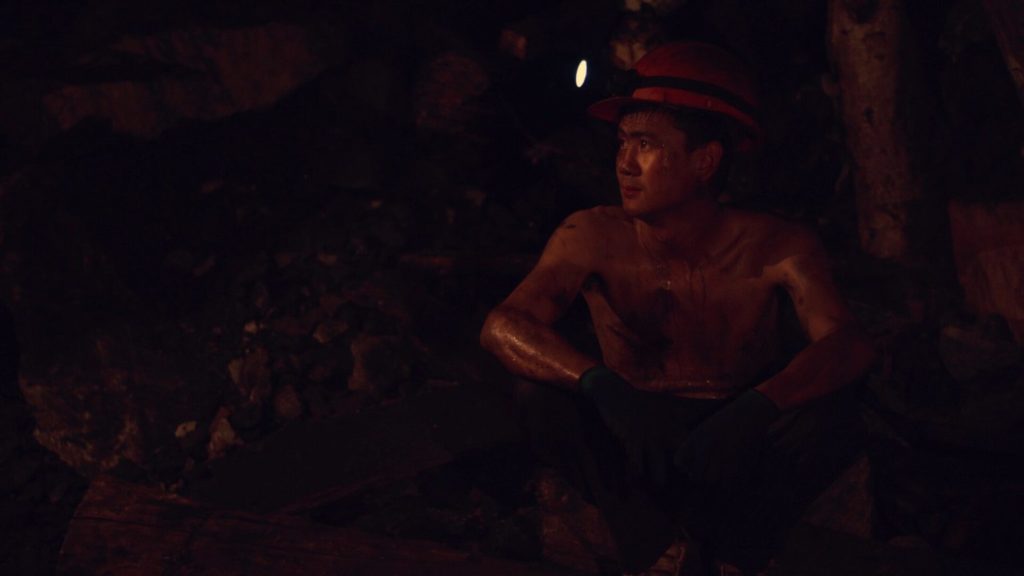
Darkness and dust dominate the aesthetics, while the workers make their way through the labyrinth of corridors with their bare bodies glistening with sweat. Background noise is loud and threatening. Within this surreal setting, Karzhoev nevertheless manages to capture the normality of everyday life that the workers create for themselves 500 metres underground: The tea brought down the shaft in a coal lorry and fresh air in bags. During the breaks, the miners eat and laugh about the unsolvable conflicts surrounding the Kumtor mine, the largest gold mine in the country, and the never-ending border conflicts.
The group sits together around a smartphone and watches a video. But danger literally hovers over the everyday scene: collapses and accidents can happen here at any time, parts of the shafts are only supported by wooden beams instead of safer metal struts. When a wall partially shatteres, the cameraman has just enough time to get his equipment to safety. According to the end of the film, one to two workers a month lose their lives in one of more than 300 private mines around the town of Sülüktü in south-west Kyrgyzstan.
Only at the end of the film are the viewers led out of the shaft into the daylight together with the workers. The miners are paid in cash and sent away – until their next assignment. Many of the workers work in mines for years, sometimes their entire lives – including those who have their say in Karzhoev’s film. At the end, when the camera once again shows the vast mountain landscape around the mine, it becomes clear why: mining remains the great economic hope for the region. However, Karzhoev’s short film puts an important spotlight on the inhumane working conditions – and it is to be hoped that these will receive even more attention in the future.
The late wind
Saya is pregnant. But shortly after her boyfriend Kairat finds out, he disappears without a trace. The film accompanies Saya on her search, which is repeatedly interrupted by street protests. Is Kairat running from responsibility? Or is his disappearance linked to the protests?

Although the film gets by with little plot and a minimum of dialogue, director Shugyla Serzhan creates an atmospheric film that stands as a symbol for today’s Kazakhstan. This is thanks in part to lead actress Tolganay Talgat, whose sensitive performance allows us to share Saya’s innermost feelings and contributes greatly to the unsettling atmosphere that hovers over the entire film. While Saya constantly longs for warmth and security and paints childlike pictures of the sun on the steamed-up window, she is constantly denied this closure. Shooting in Almaty’s wintry, grimy weather creates an omnipresent grey that emphasises the film’s oppressive mood.
Even if the street protests seem rather pathetic in view of the low film budget, they inevitably bring back memories of the Qantar, one of the most traumatic events in Kazakhstan’s recent past. Saya’s search remains unsuccessful, her questions unanswered. Together with her, the whole country looks into an unclear, but definitely unsettling future.
Old Things
Three men bathe in a canal, a girl talks lovingly to stuffed animals at a flea market, a worker proudly shows off his library card. “Old things” by Roman Zakharov is a portrait of the Uzbek capital of Tashkent that shows the contradictions of the post-Soviet city without falling into bold depictions.
Instead, Zakharov explores the multi-layered spectrum that the city offers, and in particular the people who live and work in it. There is a bread seller selling his wares by the roadside, a dog owner complaining about all the trash in the city, a passer-by talking about the political changes in the country. Zakharov subtly juxtaposes different realities: new buildings and parks, dirt on the roadside and neatly polished memorials, critical voices and oversized national flags. Different linguistic worlds also come together: sometimes Russian is spoken, sometimes Uzbek, and sometimes even the director, who comes from Kazakhstan, reaches the limits of his language skills in the conversations.
Read more on Novastan: “Alaqan”: Aida Adilbek’s decolonial documentary cinema
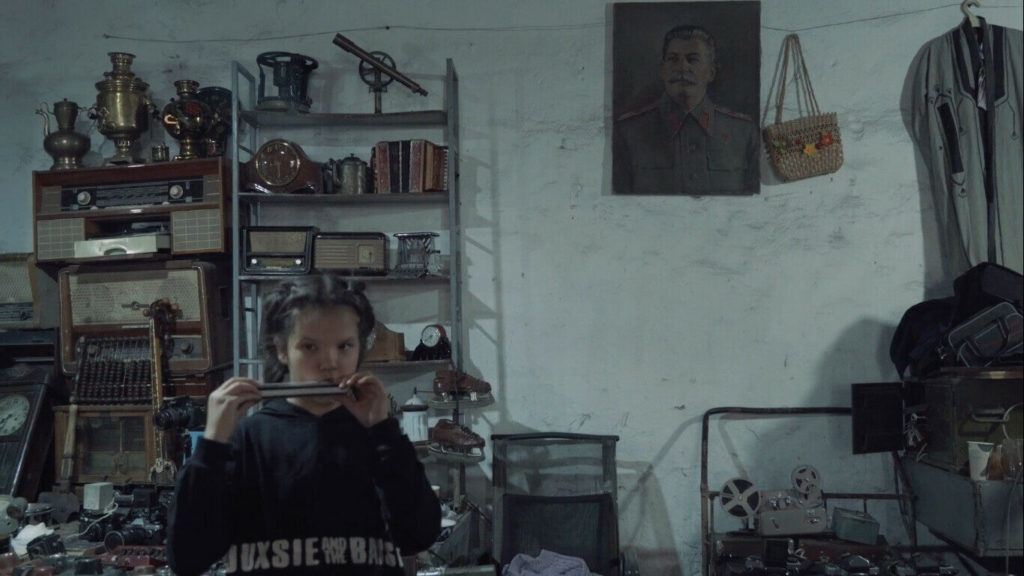
Zakharov’s short film seems to loosely follow the course of a day: from sunrise and a bazaar that seems to be just waking up, to the blazing midday sun on Tashkent’s Independence Square, to the Independence Monument in “Yangi O’zbekiston” Park in the form of a giant Huma bird glowing in bright colours in the evening. The juxtaposition creates the impression of a rounded portrait that impressively expresses the polyphony of the Central Asian metropolis and allows nuances to emerge that are otherwise often sought in vain in depictions of the Uzbek capital, and which allow for breaks with the usual national narratives.
Ask
Kyrgyz director Naizabek Sydykov’s dystopia takes us to a ruined city ruled by a bizarre dictatorship. According to the “great leader”, a “city of the future” is to be built here, but first the inhabitants are forced to demolish all the remaining houses. The compulsion to uniformity (“Be like the others”) and the surveillance are reminiscent of George Orwell’s works.
Read more on Novastan: “Ayban Ferma”: translatin George Orwell into Kyrgyz
Teenager Umut is one of the few who questions the circumstances. By chance, he discovers a capsule containing old plans of the city that is being destroyed. Umut realises: “There will be no city of the future, because we have already destroyed it.” When he dares to confront the “great leader” with questions at the next meeting, he is declared ill by his own parents, who fear that he will become a pariah, excluded from the glorious future. Umut also has to apologise publicly. Only his girlfriend (whose name is unknown), whom he has let in on his discovery, stands by him. Starting with her, more and more people begin to question the system.
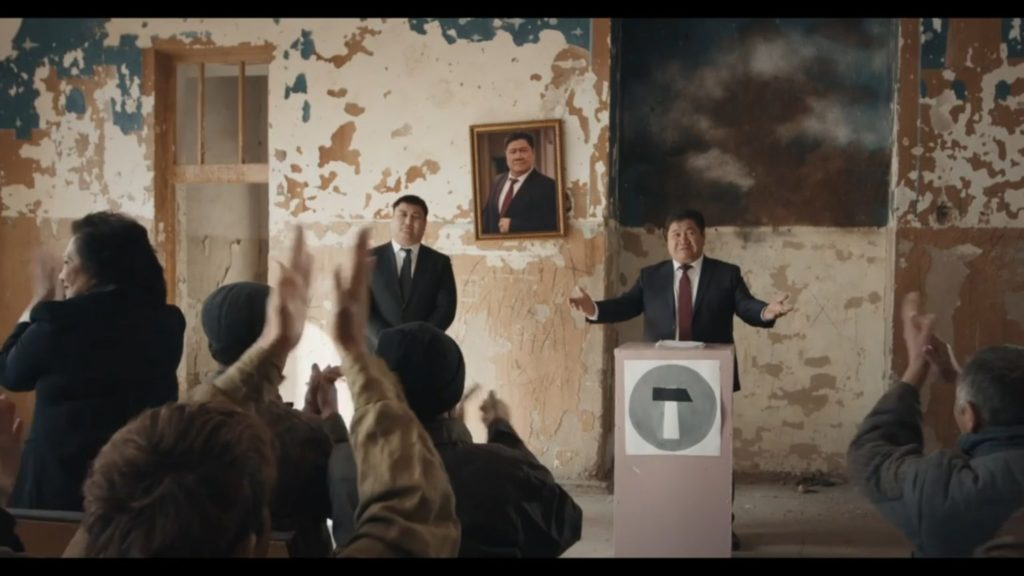
Even if the actual reasons are probably to be found in the budget, Sydykov creates an incredibly cheap aesthetic in “Ask”, which seems to have been specially designed for the dictatorship portrayed and perfectly emphasises its absurdity. And although the film’s political message seems rather simple, “Ask” is a successful parable of contemporary regimes such as those in Kazakhstan, Uzbekistan or even in Kyrgyzstan under Sadyr Japarov, in which the political leadership always promises fundamental renewal without actually delivering it. It is time to question things.
Mirtemir is alright
Karakalpakstan in the summer of 2022: in the autonomous republic protests break out and are violently suppressed by the Uzbek government. The filmmakers Sasha Kulak and Mikhail Borodin travel to Nukus in the midst of this situation to get a first-hand impression. They meet Mirtemir at a mobile karaoke station on the city’s main square.
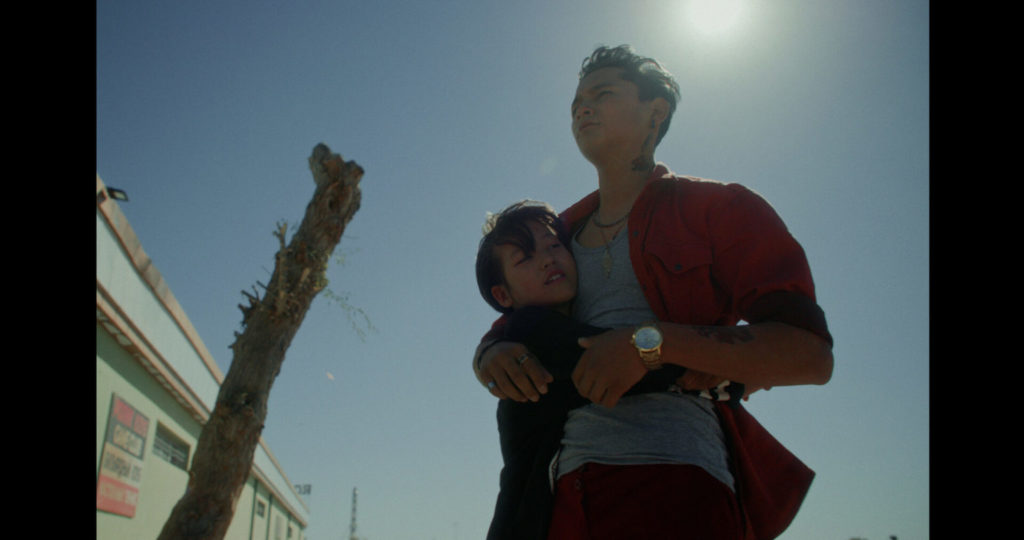
Mirtemir, who appears “like a teenager from Kreuzberg or Williamsburg” (goEast programme booklet), captivates the two filmmakers and the result is a wonderful portrait of a Karakalpak teenager who radiates incredible optimism. His life is not easy: he cares for his blind grandmother, with whom he lives, as his mother has gone abroad to work (a plan that Mirtemir also harbours himself). During the day he works in a fast food restaurant and at night at the karaoke station. But despite all his hardships, Mirtemir has a lightness of touch that comes from deep within.
With “Mirtemir is alright”, Kulak and Borodin provide an insight into a region that, apart from the Aral Sea and the Savitsky Museum, hardly receives any attention in the West. Through their camera work, which is sometimes frontal and usually very close to the protagonist, they create a film that – despite being a documentary – becomes almost fictional at times. And Mirtemir’s boundless confidence also raises the question of whether this light-heartedness is not an act in view of the camera. A film too good to be true?
No. Because the film does not turn a blind eye to the problems, but contrasts them with Mirtemir’s optimism with a laugh. The narrative has a serious background: Mirtemir shares the fate of many other children left behind by migrant workers from Central Asia, although viewers only learn this in the fade-out. But despite all this, Mirtemir’s positivity is infectious and, together with him, we can look forward to a bright future.
For more news and analysis from Central Asia, follow us on Twitter, Facebook, Telegram, Linkedin or Instagram.
 New voices: Central Asian short films at the GoEast Festival 2024
New voices: Central Asian short films at the GoEast Festival 2024 

